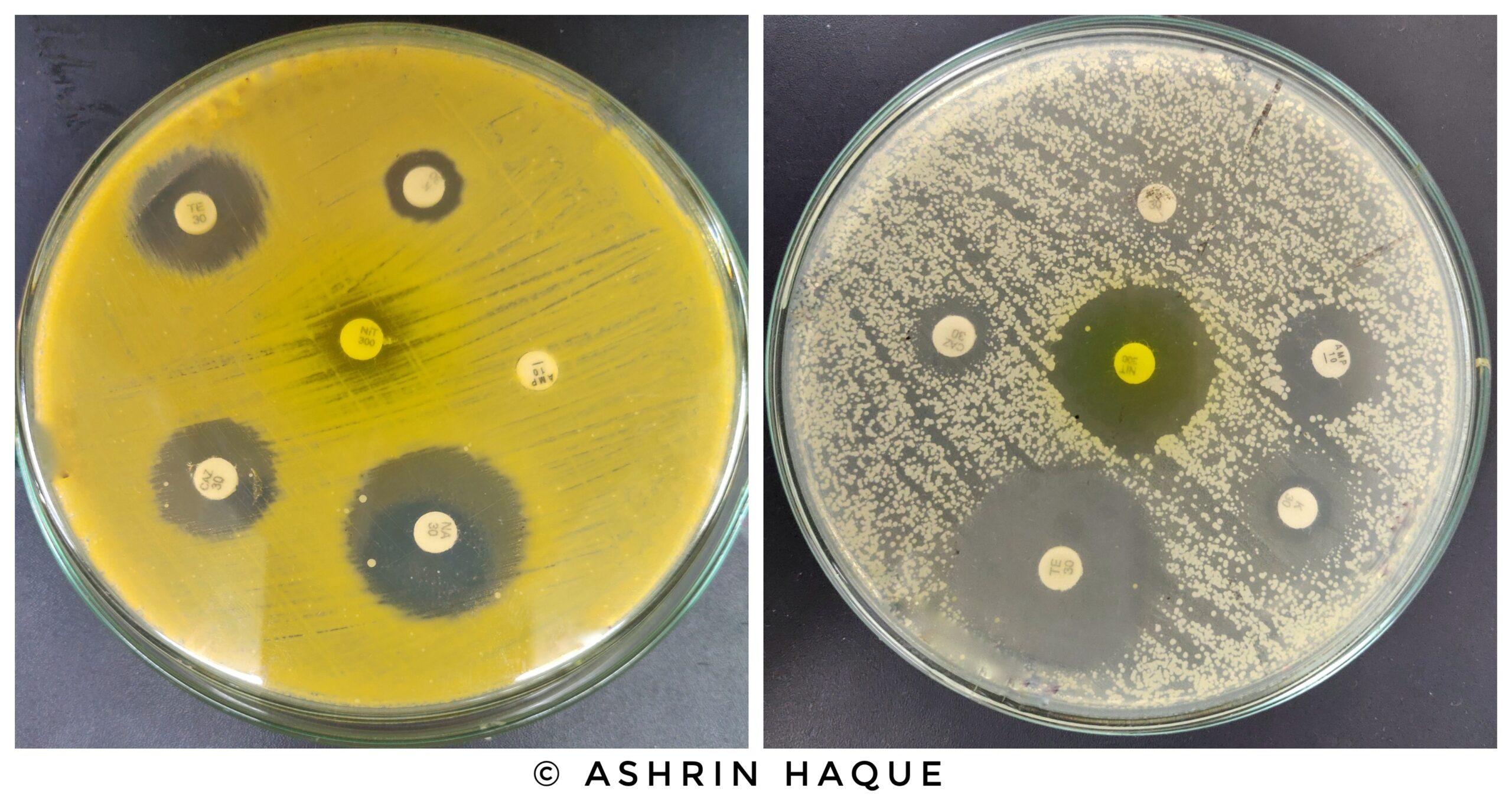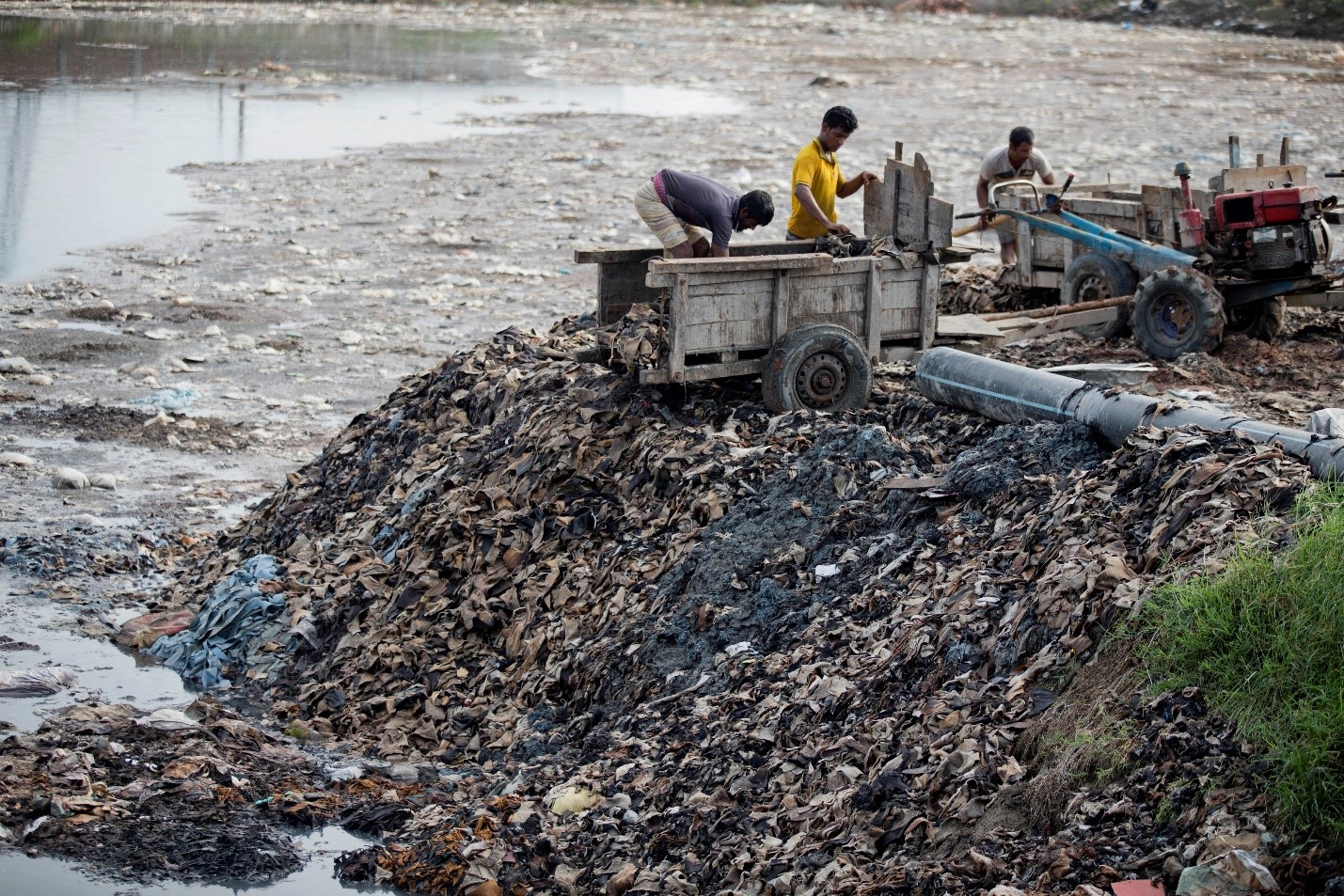Abstract
DNA isolation is a powerful tool in biotechnology research, and as there are many types of DNA, there are many DNA isolation methods from different sample types. The basic mechanism of DNA extraction is almost the same for all, and after extraction, PCR to amplify and to visualize the extracted DNA, gel electrophoresis is used. This article is an overview of bacterial genomic DNA isolation.
Introduction
Every living organism has genomic information embedded in its DNA or RNA. But other than genomic DNA, there are mitochondrial DNA, plastid DNA, circulating DNA which is cell-free DNA, plasmid DNA, viral DNA, etc. [1] These DNA can be found in animal tissues, plant cells, bacteria, environmental samples, blood, sputum, etc. Isolation of different types of genetic material is a routine procedure in molecular biology experiments, where the works get a transition from in vivo to in vitro which is cell biology to molecular biology. Though there are many types of DNA, for this instance, bacterial genomic DNA is discussed here where there is 16S rRNA gene (1500bp with 50 functional domains) that encodes for a component of the prokaryotic ribosome 30S subunit. [2] This rRNA is available in every bacteria and it is evolutionarily conserved which means it is species-specific, and by sequencing this particular part of DNA, a bacteria can be identified. [2] In recent times, environmental samples especially sewage samples are used to isolate different types of microorganisms for various experiments, for example, disease detection. For these experiments, genetic material needs to be analyzed for the identification of species or to find potential genes or characteristics. [3]
To isolate DNA from bacteria, its structure needs to be known. All bacteria have a cell membrane and cell wall. [4] For gram-positive bacteria, it has a thick peptidoglycan layer (cell wall) outside the cell membrane whereas, for gram-negative bacteria, the cell wall is thinner than gram-positive bacteria and has an additional layer of the outer membrane. Bacteria is prokaryotic, which means it has no definite nucleus, so its chromosome floats freely in the cytoplasm and it has no membrane-bound organelle. However, they have ribosome and plasmid which is circular DNA that sometimes contains genes that are essential for the survival of the bacteria. Cell membranes are consisting of lipids, and proteins and the cell wall is a complex structure of polymeric carbohydrates and amino acids. [4]

Figure- Bacterium structure Ref- https://bio.libretexts.org/Bookshelves/Introductory_and_General_Biology/Book%3A_General_Biology_(Boundless)/10%3A_Cell_Reproduction/10.01%3A_Cell_Division/10.1B%3A_Genomic_DNA_and_Chromosomes
To extract genomic DNA, first, bacteria have to be grown in a suitable medium, like LB broth for 18-24 hours. Centrifugation is used to isolate bacterial cells from the media and wash them using a buffer such as PBS. Phosphate-buffered saline or PBS has a pH of around 7.4 which contains disodium hydrogen phosphate, sodium chloride, and, in some cases, potassium dihydrogen phosphate and potassium chloride. [5]
Steps for DNA Extraction
There are some basic steps to extract DNA. First is lysis where all the elements in the cell come to the buffer solution. The second is separation where the wanted DNA is separated from all the other cell debris. The third is precipitation where the debris forms pallet and the supernatant contain the DNA. And lastly, purification and storing. [6]
Now, to reach the genomic DNA, denaturation has to occur. There are some methods to do that, which are physical methods (electric shock, heat shock, sonication, using mortar and pestle with liquid nitrogen, etc.), chemical methods (SDS, CTAB), and enzymatic methods (proteinase K). After the denaturation, all the cell element comes to the buffer solution, such as TE buffer. TE buffer gets its name from Tris buffer and EDTA. The main purpose of this buffer is to solubilize DNA while protecting it from degradation. For the protection part, EDTA works as a chelating agent (cations like Mg2+). As nucleases are present everywhere, it degrades DNA or RNA during the purification step, but nucleases require Mg2+ which acts as a necessary cofactor. EDTA chelates this Mg2+, which in turn disables the nucleases. To precipitate the debris from DNA, centrifugation is done which separates debris (pallet) and DNA (supernatant). Then the supernatant is collected and stored in a buffer solution for further use. [6]
To visualize the extracted DNA, PCR and gel electrophoresis are used. Polymerase Chain Reaction or PCR is used to amplify the extracted DNA or part of DNA and gel electrophoresis is used to separate DNA according to their sizes. [7] To extract the gene of 16S rRNA, at the time of PCR, primers are added specifically which only amplify the certain part of the whole DNA where the gene is located. As a result, the PCR product will mainly contain the 16S rRNA gene. These techniques are used for qualitative and quantitative purposes where gel electrophoresis can be used to check the integrity and sizes of the extracted DNA. [8] For quantitative analysis, the concentration of DNA can be found using spectrophotometry at 260nm. When the ratio of concentration from 260nm and 280nm wavelength is measured, it gives a good idea about purity where ~1.8 is considered pure for DNA.

Figure- gel electrophoresis Ref- https://theminione.eu/gel-electrophoresis/
Points of Error and Troubleshooting
There are some points of error that can happen during experimentation. Errors for example low PCR cycle and primer error, faulty denaturation step, while transferring supernatant pallets getting touched by micropipette head and break, pH and quality of buffer, gel run time and low-quality gel, DNA breakage, impurities in the supernatant where DNA is extracted can happen.
To troubleshoot these errors, DNA purity must be calculated, buffer quality has to be checked, while transferring supernatants, have to be very careful not to touch the pallet, and have to use lab-grade gloves.
Alternative methods
There are some alternative methods for extracting genomic DNA which is frequently used in laboratories, such as organic extraction, solid-phase extraction, Chelex method, etc. Organic extraction involves many steps including a lysis step, a phenol-chloroform extraction, ethanol precipitation, and washing which is cheap, and yields large quantities of pure DNA but is prone to contamination and involves hazardous chemicals. In solid-phase extraction, DNA binds with silica beads and by disrupting hydrogen bonds between strands making them hydrophobic, chaotropic salts facilitate the binding of the DNA to silica. Nowadays there is a lot of commercial DNA extraction kit available that facilitate efficient and quick good quality DNA extraction such as the Monarch® Genomic DNA Purification Kit from NEB. [9]
Hazards
As for hazards, preparing the buffers, and buffer reagents can be irritant. EtBr is used in gel electrophoresis, which is a potent mutagen. [10] As a safety-first rule, always have to wear gloves, when handling EtBr, full-body protection can be used. While transferring chemicals, the transferer should be very careful not to spill.
Conclusion
This article talks about the overview of bacterial genomic DNA isolation, how to do it, what can happen, what to do to troubleshoot, and alternative methods. Genomic DNA extraction is an important and necessary part of wet lab work for most experiments, such as sequence 16s rRNA, whole genome sequencing, genetic engineering, evolutionary studies, etc., and for this reason, new and more efficient methods are invented continuously.
References
1. Hamkalo, B. A., & Miller Jr, O. L. (1973). Electronmicroscopy of genetic activity. Annual review of biochemistry, 42(1), 379-396. Retrieved from- https://www.annualreviews.org/doi/abs/10.1146/annurev.bi.42.070173.002115?journalCode=biochem
2. Janda, J. M., & Abbott, S. L. (2007). 16S rRNA gene sequencing for bacterial identification in the diagnostic laboratory: pluses, perils, and pitfalls. Journal of clinical microbiology, 45(9), 2761-2764. Retrieved from- https://journals.asm.org/doi/full/10.1128/JCM.01228-07
3. Wang, J., Feng, H., Zhang, S., Ni, Z., Ni, L., Chen, Y., … & Qu, T. (2020). SARS-CoV-2 RNA detection of hospital isolation wards hygiene monitoring during the Coronavirus Disease 2019 outbreak in a Chinese hospital. International Journal of Infectious Diseases, 94, 103-106.
4. Salton, M. R. J. (1967). Structure and function of bacterial cell membranes. Annual Reviews in Microbiology, 21(1), 417-442.
5. Ramirez-Solis, R., Rivera-Perez, J., Wallace, J. D., Wims, M., Zheng, H., & Bradley, A. (1992). Genomic DNA microextraction: a method to screen numerous samples. Analytical biochemistry, 201(2), 331-335.
6. Picard, C., Ponsonnet, C., Paget, E., Nesme, X., & Simonet, P. (1992). Detection and enumeration of bacteria in soil by direct DNA extraction and polymerase chain reaction. Applied and Environmental Microbiology, 58(9), 2717-2722. retrieved from- https://journals.asm.org/doi/abs/10.1128/aem.58.9.2717-2722.1992
7. Marchesi, J. R., Sato, T., Weightman, A. J., Martin, T. A., Fry, J. C., Hiom, S. J., & Wade, W. G. (1998). Design and evaluation of useful bacterium-specific PCR primers that amplify genes coding for bacterial 16S rRNA. Applied and environmental microbiology, 64(2), 795-799.
8. Magdeldin, S. (Ed.). (2012). Gel electrophoresis: Principles and basics. BoD–Books on Demand.
9. Dairawan, M., & Shetty, P. J. (2020). The evolution of DNA extraction methods. America Journal of Biomedical Science and Research, 8(1), 39-46.
10. Debroy, A., Yadav, M., Dhawan, R., Dey, S., & George, N. (2022). DNA dyes: toxicity, remediation strategies and alternatives. Folia Microbiologica, 1-17. Retrieved from- https://link.springer.com/article/10.1007/s12223-022-00963-8
If you like this article, you can go through our other top articles
- ANTIMICROBIAL RESISTANCE AND THE STEPS TO TACKLE AMR IN THE CONTEXT OF BANGLADESH– https://learnlifescience.com/antimicrobial-resistance-and-the-steps-to-tackle-amr-in-the-context-of-bangladesh/
- BIOFILM AND ITS ROLE IN BIOREMEDIATION– https://learnlifescience.com/biofilm-and-its-role-in-bioremediation/
- GRAM STAINING: GRAM-POSITIVE VS GRAM-NEGATIVE BACTERIA– https://learnlifescience.com/gram-staining-gram-positive-vs-gram-negative-bacteria/
“Since the article has been written to reflect the actual views and capabilities of the author(s), they are not revised for content and only lightly edited to be confirmed with the Learn life sciences style guidelines”











Thanks for sharing. I read many of your blog posts, cool, your blog is very good.